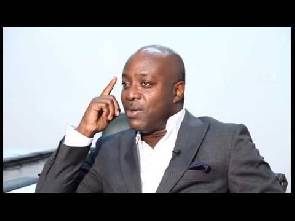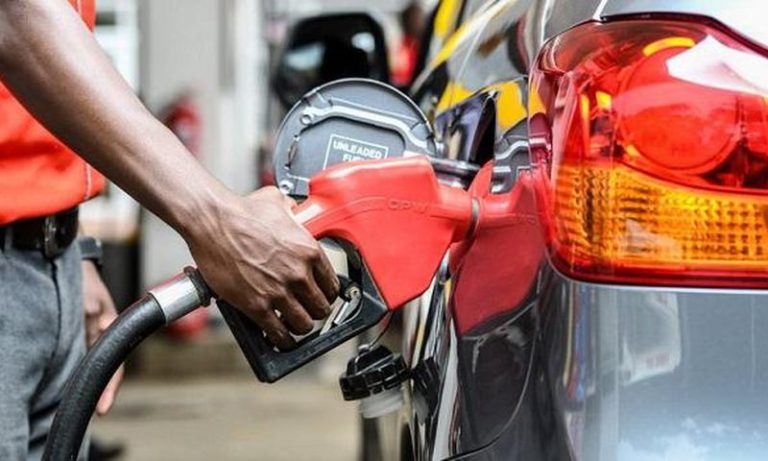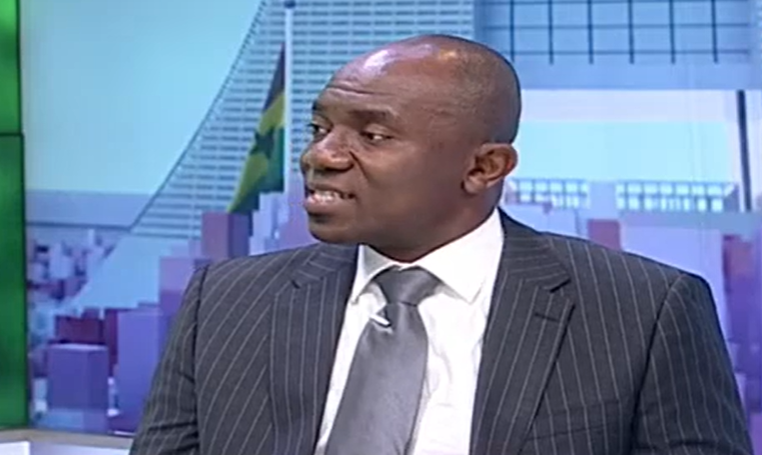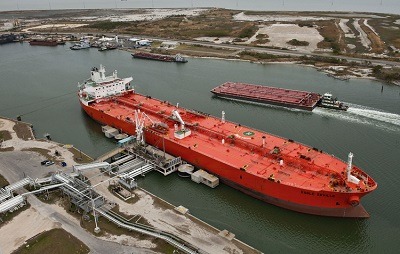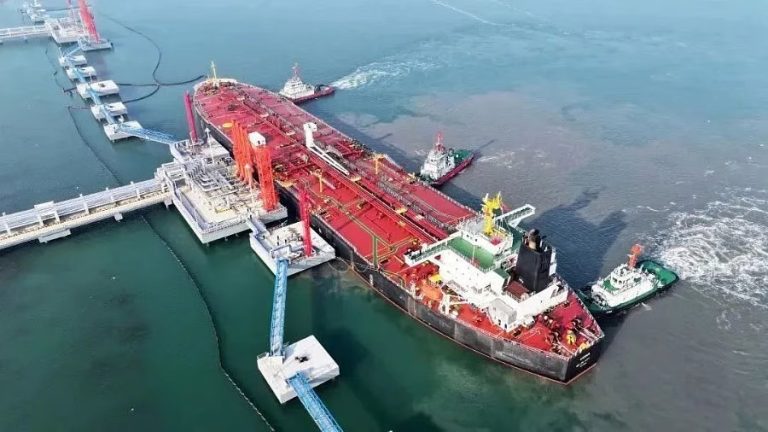The Managing Director of CAL Bank, Frank Adu Jnr., has said that banks will continue to face difficult times for at least the next couple of years as a result of their exposure to the Bulk Oil Distributing Companies (BDCs).
“The BDCs have a challenge in that they owe the banks so much money, and now the banks are no longer doing Letters of Credits to the BDC sector. That is obviously a big chunk of revenue wiped out.
“A lot of banks play in that sector, which is why non-performing loans have gone up across the board and it is not going to be easy in recovering these NPLs — because those companies that defaulted have to recover their business to pay the banks,” he said in an interview with the B&FT.
The claims by one of Ghana’s banking stewards comes at a time the central bank has found that the indicators of profitability for the banking industry show some deterioration in banks’ earnings performance for the period ended December 2015 — with growth in the sector’s income before tax registering a negative growth over the period, from 34.9 percent in December 2014 to negative 5.4 percent in December 2015. Similarly, the industry’s net profit after tax contracted by 10.5 percent in December 2015 compared with growth of 35.5 percent in December 2014.
The default of BDC loans is said to have contributed significantly to banks’ NPLs, which shot up to GH¢4.52billion in December 2015 from GH¢2.72billion in December 2014, representing a year-on-year increase of 14.9 percent over the period according to the Bank of Ghana’s latest financial stability report.
The deterioration in banks’ loan quality has led to them increasing their appetite in the risk-free government instrument, Treasury-bills. The appetite of banks in the country for the security increased to GH¢11.27billion, the highest investment in government bills for 10-years.
The value of banks’ investment in Treasury-bills for 2015 is about 33 percent more than the previous year despite a fall in T-bill yields.
Mr. Adu Jnr. noted that despite curbing the energy crisis that engulfed the nation for the past three years, a strong cedi against other currencies and stable interest rate regime all in the first quarter of 2016, a lot more needs to be done by all stakeholders before banks can get back on track.
He blamed the inability of BDCs to honour their debt obligations to the banks on government’s continued practice of not settling its debts to the BDCs on time, which often results in foreign exchange losses.
“The BDCs are basically owed a lot of money by government, and even though government has increased taxes and levies there is a process that needs to be undertaken for the BDCs to be paid — and the process is slowing down. The Ministry of Finance, Bank of Ghana, Accountant-General’s Department and others all have key roles to play,” he added.
Mr. Adu noted that in 2014/2015 Letters of Credit from the banking sector to the BDCs and to some extent Volta River Authority (VRA) were valued at about US$3billion, with CAL Bank alone contributing about US$500million.
However, when the International Monetary Fund (IMF) earlier this year published its second review report following assessment of the country’s progress under the Extended Credit Facility Arrangement, the Bretton Woods institution noted that while no new domestic arrears have accumulated so far, government has repaid GH¢600million of additional arrears to the BDCs that were identified by independent auditors.
The report went on to add that the planned arrears repayment in the 2016 budget is in line with the arrears clearance plan established under the programme whereby government plans to clear about GH¢2.3billion of outstanding arrears, including the provision of GH¢800million for the ongoing audit of additional claims by the oil importers (BDCs) related to losses due to underpricing and foreign exchange losses in 2014 and early 2015.
Despite the losses across the banking sector, Mr. Adu noted that his bank was ‘lucky’ to make some appreciable profits last year.
The bank posted profit after tax of GH¢160million in 2015 from GH¢142million in 2014 while total assets jumped to GH¢3.2billion, with NPLs standing at 6.2percent — which is below the industry’s average of 14 percent.
“We were lucky. There are certain positions every bank takes in the market and our position was such that it went in our favour, but I feel we haven’t got the same momentum that we had in previous years. We might just stay flat in 2016 because there are certain areas in the economy the banks have had to exit, which is having a significant impact on them.”
But he cautioned that though the banks are facing challenges, just like any other business with ebbs and flows, they will bounce bank strongly and perform better.
“There will be good, bad and okay years, and there will be difficult years; but you should not be discouraged. It is a long journey. It is not going to be a smooth-sailing all through.
“The trick is when you have a bad year you strategise and recover, and your shareholders and stakeholders must understand that you need time to do so. All the banks that have had a terrible 2015 are not going to have a terrible year forever. They will strategise or bounce back whether it is 12, 18 or 24 months.”
The Managing Director of CAL Bank, Frank Adu Jnr., has said that banks will continue to face difficult times for at least the next couple of years as a result of their exposure to the Bulk Oil Distributing Companies (BDCs).
“The BDCs have a challenge in that they owe the banks so much money, and now the banks are no longer doing Letters of Credits to the BDC sector. That is obviously a big chunk of revenue wiped out.
“A lot of banks play in that sector, which is why non-performing loans have gone up across the board and it is not going to be easy in recovering these NPLs — because those companies that defaulted have to recover their business to pay the banks,” he said in an interview with the B&FT.
The claims by one of Ghana’s banking stewards comes at a time the central bank has found that the indicators of profitability for the banking industry show some deterioration in banks’ earnings performance for the period ended December 2015 — with growth in the sector’s income before tax registering a negative growth over the period, from 34.9 percent in December 2014 to negative 5.4 percent in December 2015. Similarly, the industry’s net profit after tax contracted by 10.5 percent in December 2015 compared with growth of 35.5 percent in December 2014.
The default of BDC loans is said to have contributed significantly to banks’ NPLs, which shot up to GH¢4.52billion in December 2015 from GH¢2.72billion in December 2014, representing a year-on-year increase of 14.9 percent over the period according to the Bank of Ghana’s latest financial stability report.
The deterioration in banks’ loan quality has led to them increasing their appetite in the risk-free government instrument, Treasury-bills. The appetite of banks in the country for the security increased to GH¢11.27billion, the highest investment in government bills for 10-years.
The value of banks’ investment in Treasury-bills for 2015 is about 33 percent more than the previous year despite a fall in T-bill yields.
Mr. Adu Jnr. noted that despite curbing the energy crisis that engulfed the nation for the past three years, a strong cedi against other currencies and stable interest rate regime all in the first quarter of 2016, a lot more needs to be done by all stakeholders before banks can get back on track.
He blamed the inability of BDCs to honour their debt obligations to the banks on government’s continued practice of not settling its debts to the BDCs on time, which often results in foreign exchange losses.
“The BDCs are basically owed a lot of money by government, and even though government has increased taxes and levies there is a process that needs to be undertaken for the BDCs to be paid — and the process is slowing down. The Ministry of Finance, Bank of Ghana, Accountant-General’s Department and others all have key roles to play,” he added.
Mr. Adu noted that in 2014/2015 Letters of Credit from the banking sector to the BDCs and to some extent Volta River Authority (VRA) were valued at about US$3billion, with CAL Bank alone contributing about US$500million.
However, when the International Monetary Fund (IMF) earlier this year published its second review report following assessment of the country’s progress under the Extended Credit Facility Arrangement, the Bretton Woods institution noted that while no new domestic arrears have accumulated so far, government has repaid GH¢600million of additional arrears to the BDCs that were identified by independent auditors.
The report went on to add that the planned arrears repayment in the 2016 budget is in line with the arrears clearance plan established under the programme whereby government plans to clear about GH¢2.3billion of outstanding arrears, including the provision of GH¢800million for the ongoing audit of additional claims by the oil importers (BDCs) related to losses due to underpricing and foreign exchange losses in 2014 and early 2015.
Despite the losses across the banking sector, Mr. Adu noted that his bank was ‘lucky’ to make some appreciable profits last year.
The bank posted profit after tax of GH¢160million in 2015 from GH¢142million in 2014 while total assets jumped to GH¢3.2billion, with NPLs standing at 6.2percent — which is below the industry’s average of 14 percent.
“We were lucky. There are certain positions every bank takes in the market and our position was such that it went in our favour, but I feel we haven’t got the same momentum that we had in previous years. We might just stay flat in 2016 because there are certain areas in the economy the banks have had to exit, which is having a significant impact on them.”
But he cautioned that though the banks are facing challenges, just like any other business with ebbs and flows, they will bounce bank strongly and perform better.
“There will be good, bad and okay years, and there will be difficult years; but you should not be discouraged. It is a long journey. It is not going to be a smooth-sailing all through.
“The trick is when you have a bad year you strategise and recover, and your shareholders and stakeholders must understand that you need time to do so. All the banks that have had a terrible 2015 are not going to have a terrible year forever. They will strategise or bounce back whether it is 12, 18 or 24 months.”
The Managing Director of CAL Bank, Frank Adu Jnr., has said that banks will continue to face difficult times for at least the next couple of years as a result of their exposure to the Bulk Oil Distributing Companies (BDCs).
“The BDCs have a challenge in that they owe the banks so much money, and now the banks are no longer doing Letters of Credits to the BDC sector. That is obviously a big chunk of revenue wiped out.
“A lot of banks play in that sector, which is why non-performing loans have gone up across the board and it is not going to be easy in recovering these NPLs — because those companies that defaulted have to recover their business to pay the banks,” he said in an interview with the B&FT.
The claims by one of Ghana’s banking stewards comes at a time the central bank has found that the indicators of profitability for the banking industry show some deterioration in banks’ earnings performance for the period ended December 2015 — with growth in the sector’s income before tax registering a negative growth over the period, from 34.9 percent in December 2014 to negative 5.4 percent in December 2015. Similarly, the industry’s net profit after tax contracted by 10.5 percent in December 2015 compared with growth of 35.5 percent in December 2014.
The default of BDC loans is said to have contributed significantly to banks’ NPLs, which shot up to GH¢4.52billion in December 2015 from GH¢2.72billion in December 2014, representing a year-on-year increase of 14.9 percent over the period according to the Bank of Ghana’s latest financial stability report.
The deterioration in banks’ loan quality has led to them increasing their appetite in the risk-free government instrument, Treasury-bills. The appetite of banks in the country for the security increased to GH¢11.27billion, the highest investment in government bills for 10-years.
The value of banks’ investment in Treasury-bills for 2015 is about 33 percent more than the previous year despite a fall in T-bill yields.
Mr. Adu Jnr. noted that despite curbing the energy crisis that engulfed the nation for the past three years, a strong cedi against other currencies and stable interest rate regime all in the first quarter of 2016, a lot more needs to be done by all stakeholders before banks can get back on track.
He blamed the inability of BDCs to honour their debt obligations to the banks on government’s continued practice of not settling its debts to the BDCs on time, which often results in foreign exchange losses.
“The BDCs are basically owed a lot of money by government, and even though government has increased taxes and levies there is a process that needs to be undertaken for the BDCs to be paid — and the process is slowing down. The Ministry of Finance, Bank of Ghana, Accountant-General’s Department and others all have key roles to play,” he added.
Mr. Adu noted that in 2014/2015 Letters of Credit from the banking sector to the BDCs and to some extent Volta River Authority (VRA) were valued at about US$3billion, with CAL Bank alone contributing about US$500million.
However, when the International Monetary Fund (IMF) earlier this year published its second review report following assessment of the country’s progress under the Extended Credit Facility Arrangement, the Bretton Woods institution noted that while no new domestic arrears have accumulated so far, government has repaid GH¢600million of additional arrears to the BDCs that were identified by independent auditors.
The report went on to add that the planned arrears repayment in the 2016 budget is in line with the arrears clearance plan established under the programme whereby government plans to clear about GH¢2.3billion of outstanding arrears, including the provision of GH¢800million for the ongoing audit of additional claims by the oil importers (BDCs) related to losses due to underpricing and foreign exchange losses in 2014 and early 2015.
Despite the losses across the banking sector, Mr. Adu noted that his bank was ‘lucky’ to make some appreciable profits last year.
The bank posted profit after tax of GH¢160million in 2015 from GH¢142million in 2014 while total assets jumped to GH¢3.2billion, with NPLs standing at 6.2percent — which is below the industry’s average of 14 percent.
“We were lucky. There are certain positions every bank takes in the market and our position was such that it went in our favour, but I feel we haven’t got the same momentum that we had in previous years. We might just stay flat in 2016 because there are certain areas in the economy the banks have had to exit, which is having a significant impact on them.”
But he cautioned that though the banks are facing challenges, just like any other business with ebbs and flows, they will bounce bank strongly and perform better.
“There will be good, bad and okay years, and there will be difficult years; but you should not be discouraged. It is a long journey. It is not going to be a smooth-sailing all through.
“The trick is when you have a bad year you strategise and recover, and your shareholders and stakeholders must understand that you need time to do so. All the banks that have had a terrible 2015 are not going to have a terrible year forever. They will strategise or bounce back whether it is 12, 18 or 24 months.”
–
![]()

